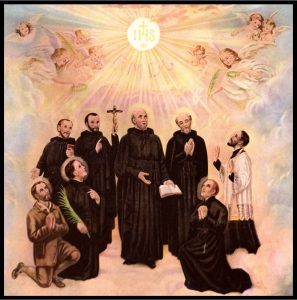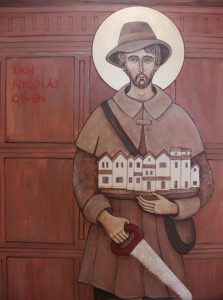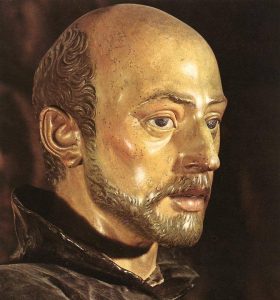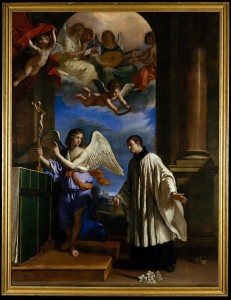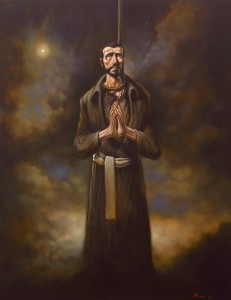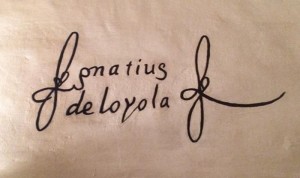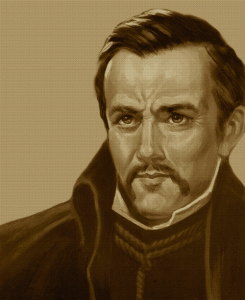One says, In February 2010, during a visit to Rome by the Scottish bishops’ conference, Benedict XVI asked the bishops to promote devotion to St. John Ogilvie among priests – since the Jesuit martyr had been “truly outstanding in his dedication to a difficult and dangerous pastoral ministry, to the point of laying down his life.” Later that year, during the Scottish segment of his U.K. visit, the Pope again encouraged priests to look to the saint’s “dedicated, selfless and brave” example
Walter Ogilvie was a Scottish noble who raised his son John in the state religion of Scotland, Calvinism. John converted to Catholicism at age 17 at Louvain, Belgium. He joined the Jesuits soon after in 1597, and was ordained in Paris, France in 1610. Sent to work in Rouen, France.
It was a time of great persecution of Catholicism in Scotland. “Send only those,” wrote the Earl of Angus to the Jesuit General, “who wish for this mission and are strong enough to bear the heat of the day, for they will be in exceeding danger.” Wholesale massacres of Catholics had taken place in the past, but by this point the hunters concentrated on priests and those who attended Mass. The Jesuits were determined to minister to the oppressed Catholic laity, but when captured, they were tortured for information, then hanged, drawn, and quartered.
Ogilvie repeatedly requested assignment to his home Scotland, and it was finally granted; he returned in November 1613. He worked as an underground missionary in Edinburgh and Glasgow, dodging the Queen‘s priest-hunters, disguised as a soldier named Watson. After 11 months in the field (and on the run), John was betrayed by a phony Catholic, imprisoned, interrogated, then tortured for the names of active Catholics. He gave no information. “Your threats cheer me; I mind them no more than the cackling of geese,” he told his captors. Asked if he feared to die Father John replied, “No more than you do to dine.”
After three trials he was convicted of treason for being loyal to the Pope, and denying the king‘s supremacy in spiritual matters. He is the Church‘s only officially recorded Scottish martyr. He suffered terrible tortures, including being kept awake for eight days and nine nights, in an attempt to make him divulge the identities of other Catholics. Nonetheless, Ogilvie did not relent; On 10 March 1615, aged thirty-six years, he was paraded through the streets of Glasgow and hanged and disembowelled, according to the penalty of the time, at Glasgow Cross.
 “At length, it was as if you [Lord] opened to me the heart in your most sacred body: I seemed to see it directly before my eyes. You told me to drink from this fountain, inviting me, that is, to draw the waters of my salvation from your wellsprings, my Savior. I was most eager that streams of faith, hope and love should flow into me from that source. I was thirsting for poverty, chastity, obedience. I asked to be made wholly clean by you, to be clothed by you, to be made resplendent by you.”
“At length, it was as if you [Lord] opened to me the heart in your most sacred body: I seemed to see it directly before my eyes. You told me to drink from this fountain, inviting me, that is, to draw the waters of my salvation from your wellsprings, my Savior. I was most eager that streams of faith, hope and love should flow into me from that source. I was thirsting for poverty, chastity, obedience. I asked to be made wholly clean by you, to be clothed by you, to be made resplendent by you.”